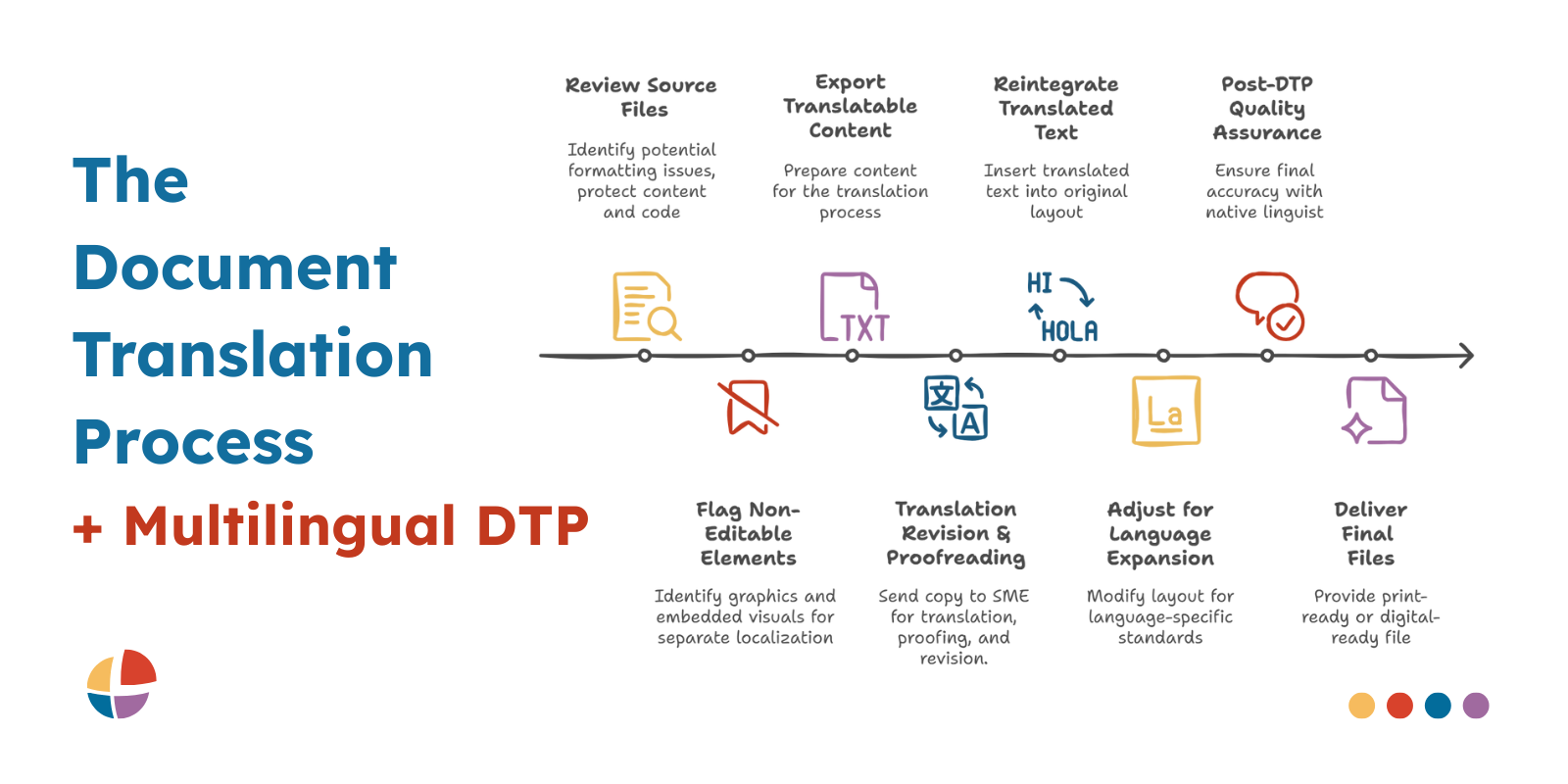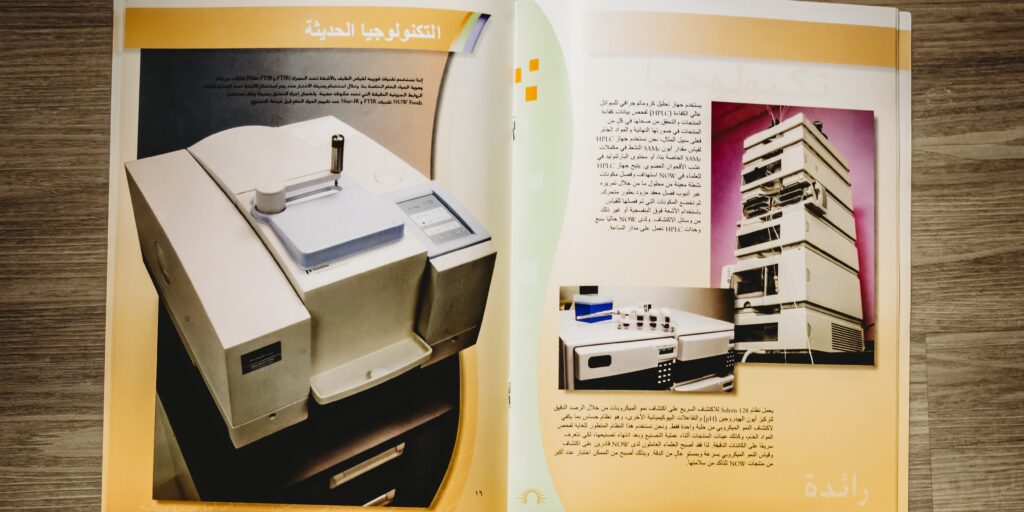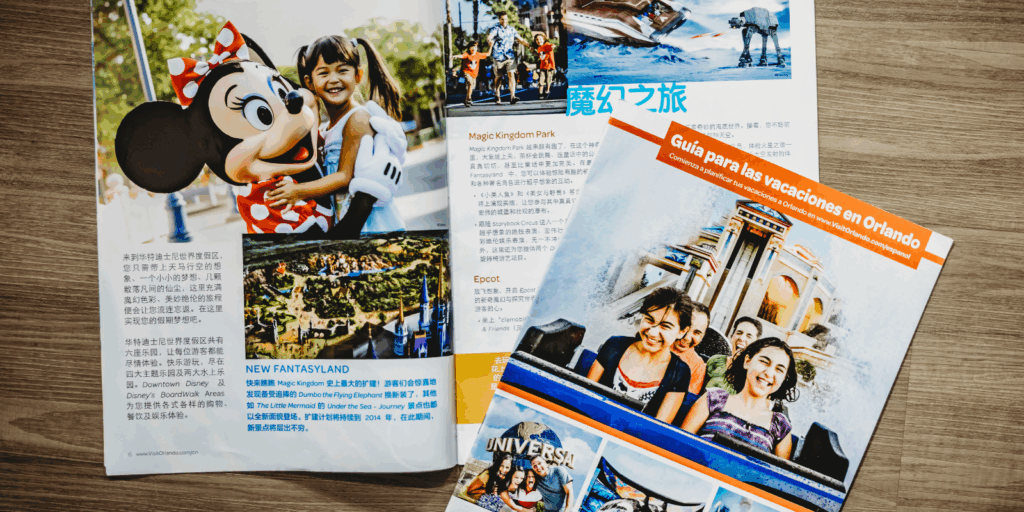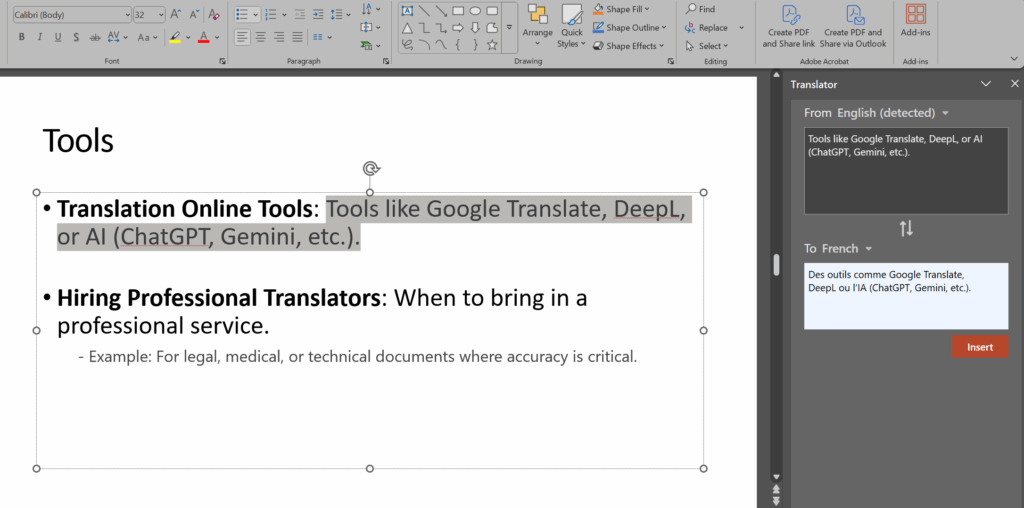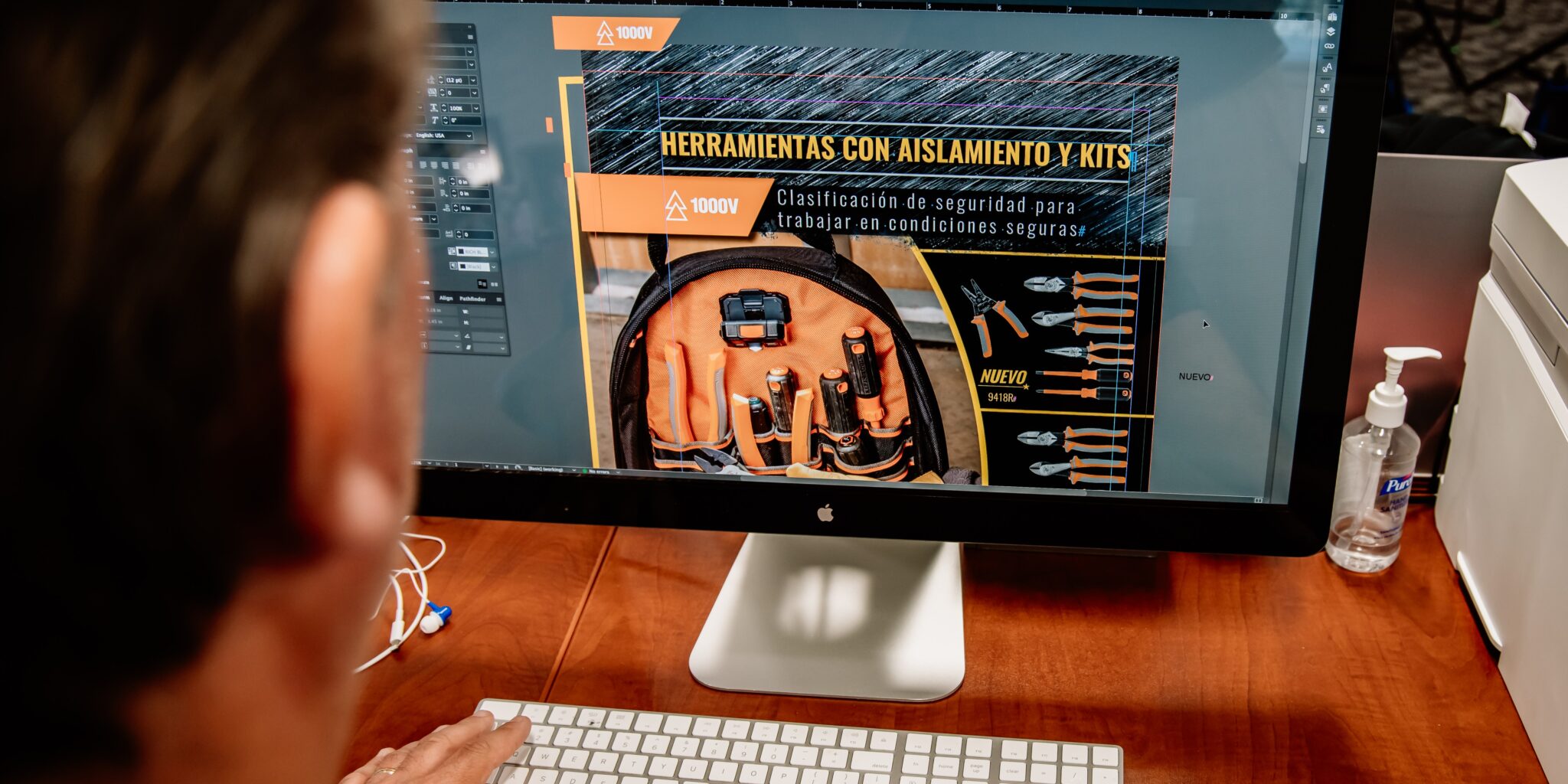
Multilingual Desktop Publishing (multilingual DTP) is formatting translated materials so their design looks and feels consistent across languages – like for brochures, catalogs, instructional manuals, and other critical documents. Our desktop publishing expert provides guidance on common and complex questions related to multilingual DTP.
What is Multilingual Desktop Publishing? Do I need it?
The goal behind incorporating multilingual DTP into the translation process is to preserve branding and visuals within your documents so they feel natural in every language. After all, those publications weren’t designed by accident. There’s a specific reason your designer chose the images, fonts, and layout that they did.
Adding a Multilingual DTP step into the translation process ensures design elements like images, headlines, image captions, spacing around design elements, and line and paragraph breaks all feel natural in every language. This gives each language’s audience the impression that the publication was created just for them.
From brochures to employee handbooks, marketing and technical manuals, your business’s materials have important information to convey. Translating them into a new language is the first step in making that information accessible to a wider audience.

A multilingual DTP specialist working on formatting a marketing brochure.
But wait. There’s more:
A document’s appearance is as much a part of its message as its text. The effect can be jarring when the text is translated but the design is not adjusted.
Not only does the publication fail to convey its intended message, it can create a negative impression of your company.
The audience reading your translated brochure or manual will notice that it feels “off”. Any excess white space, margins, and extra or missing line breaks aren’t normal. Images may not make sense in the newly formatted context. The text, no matter how well translated, can be difficult to format. A translated document without formatting can make the material feel cheap and untargeted, and potentially damage brand reputation.
Problems with Formatting Documents? You Need Multilingual DTP
Ever find yourself asking: how do I translate a document without losing formatting?
To translate a formatted print piece like an employee handbook, the text is typically extracted from the source file, translated, then imported back into the document.
Multilingual DTP helps solve common formatting challenges in the translation process, such as:
Language expansion and contraction
Translating English into other languages can increase or decrease the lines of text by more than 30%. It will take your German manual two pages to say what your English manual said in one. Meanwhile, the Chinese manual will get the point across in two-thirds of a page, leaving awkward white space to fill. The text will flow unevenly across each document, breaking in odd places, and making images and graphics appear out of place.
Flipped reading direction
Some languages are read right-to-left and are difficult to format, like Arabic or Urdu. Translating into one of these languages means reversing paragraph alignment, flipping bullets and numbering to the opposite side of each paragraph, and possibly moving the binding to the opposite side of the page.
Readability
Besides correcting alignment, multilingual DTP takes into account the movement of the reader’s eye. Rather than flowing the translated text around existing elements like images and callouts, a multilingual DTP expert mirrors the reading flow of the source material, placing these elements next to the text the original designer intended them to appear with.
Illegible fonts
Your font may be an important part of your visual brand. But many fonts that look appealing to English-speaking readers are impossible to apply to languages like Korean or Simplified Chinese. A multilingual DTP specialist can apply a font that honors your brand tone while making the text easy to read.
Re-sorted glossaries and lists
Glossaries and other alphabetized lists need to be regenerated and possibly alphabetized manually after translation to restore the entries to alphabetical order. Generated lists like tables of contents, cross-references, and indices also need to be revised to ensure they’re in the correct order, and the page numbers line up with the translated text.
Image localization
While maybe not a formatting-specific issue, you’ll need to be able to navigate formatting basics to localize images. Most frequently, localizing images involves translating text, but could include adapting cultural references to the target language (such as colors, symbols, currency, and measurements such as imperial to metric). You may need to resize or remove images depending on the concerns mentioned above. All while keeping the new document consistent with the brand guide.
What Can Go Wrong in Multilingual DTP Process (And How to Avoid It)
Some businesses recognize how important multilingual DTP is, but underestimate the challenges it poses (especially for an internal team or AI tools).
If you’re taking on the Multilingual DTP process yourself or outsourcing it to a professional translation company like Interpro, be aware of some of the common challenges.
Missing source files
One of the most common challenges DTP specialists face is a need for original source files. A business might design a brochure in InDesign, save it as a PDF, and use it for years before deciding they want to translate it for a new audience. By then, the InDesign file is long lost, or the designer who developed the file is no longer reachable.
The problem with translating a PDF is that it is not a source file. The PDF format is primarily intended for publication and distribution, not for editing. It is more difficult to edit the text and formatting in PDF files compared to editing the source files. That’s one of the primary reasons people use PDFs: to preserve a document’s appearance and prevent unauthorized duplication.
The other problem is source files might also include graphics with embedded text, which is extracted separately for translation. Manually replacing this text can be time-intensive, particularly if it’s laid over a photograph. This manual process adds scope in terms of cost and timing to a project.
It is much more cost effective and easier to translate if you have the original source file. However, we understand sometimes legacy files are lost or corrupted. In this case we would recommend converting or recreating the PDF in InDesign or another design application
Quality assurance
Ambitious do-it-yourselfers have been known to copy their text into an AI-powered translator like Google Translate or ChatGPT and then copy and paste the text back into their document with no quality assurance process.
Even if the machine translates all the words correctly (which is unlikely) it won’t check for message integrity or nuance, translate graphics or videos, or format the text. This is not a recommended process, even by the AI tools themselves. It’s a highly risky process that leaves a ton of room for errors.
Is the translation keeping you compliant in the new language? Or is it leaving you open to legal liability? Does a reference to “miles per hour” resonate with an audience that uses the metric system? Do dates match the audience’s format, whether they use “day-month-year” or “month-day-year?” Were currencies correctly converted? Are glossaries alphabetized correctly? Is the graphic required to educate or understand the text? How are you certain that you didn’t accidentally delete a character when trying to wrangle Arabic into your InDesign file?
As a professional translation agency, we have a layered approach to quality. Our Multilingual DTP specialists adhere to strict internationally recognized standards for quality to be prepared and prevent mistakes so you can be rest assured your material will look good in any language.
Designs are not intended for translation
Logos, branded assets, and creative visuals generally dosn’t translate well. Oftentimes creative works like marketing campaigns have to be re-imagined and re-created in order for your message to make sense in the new market.
That’s where your global marketing strategy should include a localization expert to help you create new ideas that are just as great as the original marketing campaign.
Example of localized Marketing: Starbucks’ Japan expansion involved reimagining a menu, packaging, and advertising, such as in this 20th anniversary campaign for Osaka.
That said, there are a few things within your control to consider.
You can make the multilingual DTP process much faster and smoother by doing a process we at Interpro call designing with translations in mind.
Designing documents with simple layouts, grouped elements, white space, and other good design principles minimizes the adjustments required to format the translation (and is another cost saver). Using images that don’t have text or using a text overlay on images is another great way to save on costs and speed up the DTP process.
How it Works: The Multilingual DTP Process
To translate and format a document using multilingual DTP, it’s the document translation process but with a few extra steps:
Your translation team will involve a DTP specialist to review the complete source file, such as an Adobe InDesign file or PowerPoint presentation. The DTP specialist may also protect content that should not be available for translation.
The text is exported to an interchange format, then imported into a translation tool for translation, revision, and proofreading (TRP).
The specialist will then identify any embedded text such as text-based graphics that will need to be handled separately.
Interpro’s Document Translation Process with Multilingual DTP
After TRP, the DTP specialist imports the translated text back into the file. They then adjust the design to accommodate the translated content while remaining true to the document’s original look and feel, before sending the layout for quality assurance and comparison against the original source file.
Ready to Translate? Start With a Single Document
Find out how easy it can be to get the translation right the first time. Get the behind-the-scenes professional translation experience and request a free sample translation.
We’ll take you through the document translation process with one of your documents to show how Interpro makes it seamless to get accurate translations, tone, and formatting every time.
Document translation is the start of your growth strategy, your risk mitigation plan, and your key to clear communication. Whether you’re targeting international markets or supporting U.S. audiences with English-as-a-Second Language, we tailor translation solutions that help you scale with confidence.
Category: Translation
Tags: Guide
Service: Document Translation, Translation Services
Don't forget to share this post!
Stay Updated with Interpro
Subscribe to our newsletter for the latest updates and insights in translation and localization.



